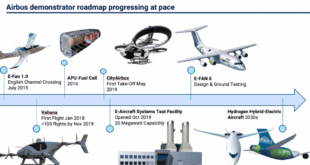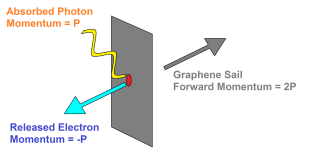In the fast-paced world of military technology, the pursuit of hypersonic scramjet propulsion is reaching new heights, promising to redefine warfare and transportation as we know it. With speeds ranging from Mach 5 to 10 Machs, these advanced systems are poised to enable unprecedented capabilities in military operations and civilian …
Read More »Unlocking a Sustainable Future: The Rise of Ammonia-Fuelled Engines
In the quest for a cleaner, greener future, innovative solutions are essential to combatting climate change and reducing carbon emissions. Among the emerging technologies poised to revolutionize the transportation sector is the ammonia-fuelled engine—a promising advancement that offers both environmental benefits and technological prowess. In this article, we delve into …
Read More »Soaring Into the Future: Hydrogen Hybrids Revolutionizing Commercial Aviation
Introduction: The aviation industry, responsible for about 2.5% of global carbon dioxide emissions, is under increasing pressure to transition to more sustainable practices. In this pursuit, hydrogen hybrids are emerging as a promising solution, offering the potential to significantly reduce carbon emissions and propel commercial aviation towards a greener future. …
Read More »Innovations in Carbon Capture: Turning CO2 into Valuable Resources
Introduction: Carbon dioxide (CO2) emissions are a major contributor to climate change, and finding effective ways to capture and utilize this greenhouse gas is crucial for mitigating its environmental impact. One promising approach is capturing CO2 from the air or industrial sources like power plant exhaust and converting it into …
Read More »Revolutionizing Space Travel: Harnessing Laser Directed Energy Propulsion for Interplanetary Missions
Introduction: The future of space exploration is marked by increasingly ambitious plans to venture deeper into our solar system and beyond. Beyond ongoing initiatives aimed at establishing infrastructure in cis-lunar space and mounting crewed missions to the Moon and Mars, there’s a burgeoning interest in exploring the outer reaches of …
Read More »Igniting the Future: Exploring Detonation-Driven Propulsion
Introduction: In the realm of propulsion systems, traditional combustion methods have long relied on deflagration, a process that involves the relatively slow, subsonic burning of fuel. However, a groundbreaking alternative has emerged in the form of detonation-driven propulsion, which harnesses the power of shock waves to accelerate the oxidation of …
Read More »Harnessing the Power of Wind: Hull Designs for Maximizing Propulsive Effects of New Generation Wind Sails on Large Commercial Ships
Introduction The shipping industry plays a vital role in global trade and transportation, contributing to economic growth while also facing challenges in reducing greenhouse gas emissions. The shipping industry is one of the largest contributors to greenhouse gas emissions. In order to reduce emissions, the industry is looking to new …
Read More »Harnessing Heat Quietly: The Thermoacoustic Stirling Generator
In the realm of power generation, innovation often lies in the fusion of existing technologies to create something entirely new. One such innovation making waves in the world of energy production is the thermoacoustic Stirling generator. Combining elements of the Stirling engine, linear motor, and thermoacoustic principles, this cutting-edge device …
Read More »Revolutionizing Energy Distribution: DARPA’s POWER Initiative to Beam Electricity Across Military Theaters
Energy is a critical resource for military operations, particularly in remote and isolated areas where supply lines are precarious. The need for fuel convoys in such regions not only incurs high costs but also exposes troops to improvised bomb attacks, leading to unnecessary casualties. To address this challenge, the Defense …
Read More »Where Wind Whispers Power : World of Offshore Wind Farms andTechnology breakthroughs
As the world pivots towards sustainable energy solutions, offshore wind farms stand as towering sentinels, capturing the boundless power of the wind to illuminate our homes and businesses. Nestled in the expansive embrace of the open sea, these majestic turbines are not just a technological marvel but a testament to …
Read More » International Defense Security & Technology Your trusted Source for News, Research and Analysis
International Defense Security & Technology Your trusted Source for News, Research and Analysis


